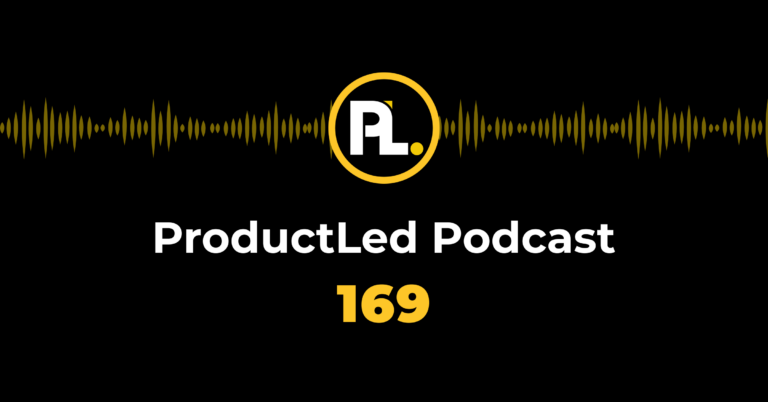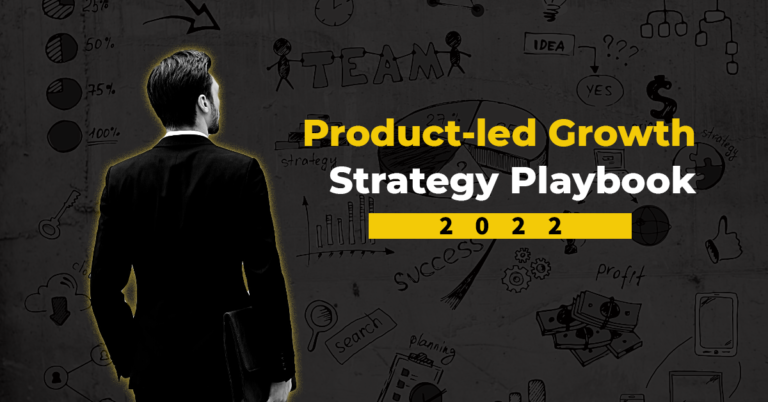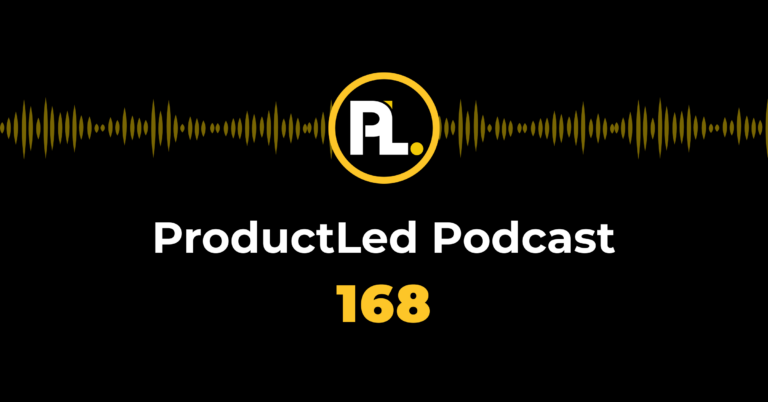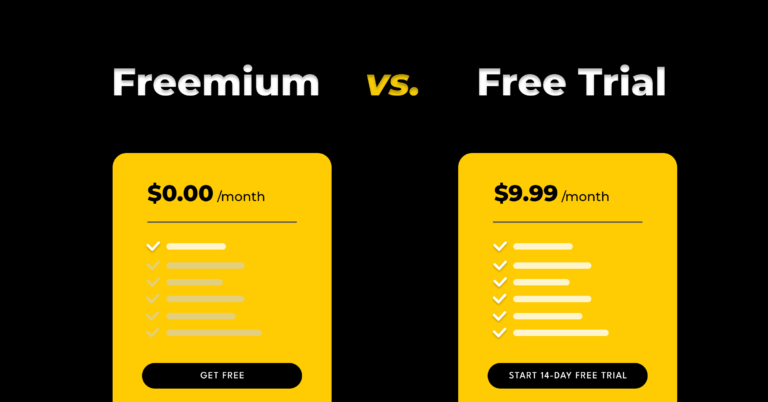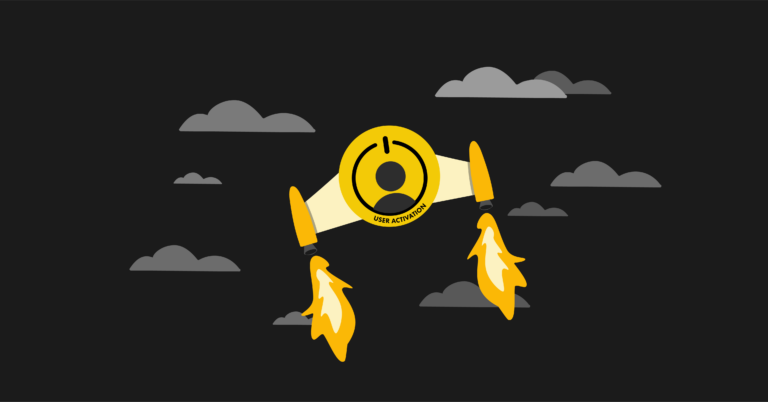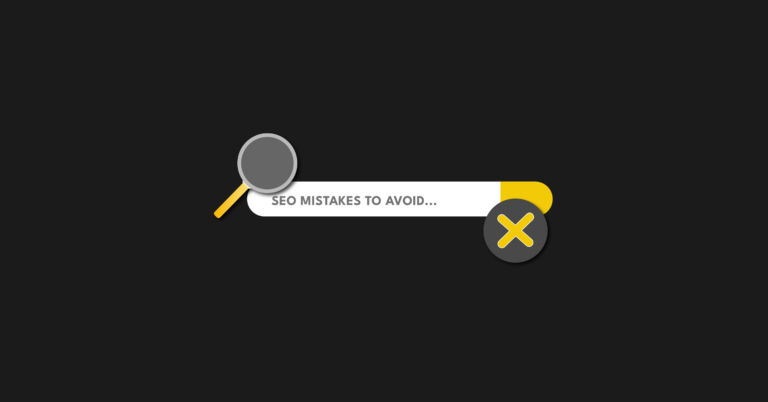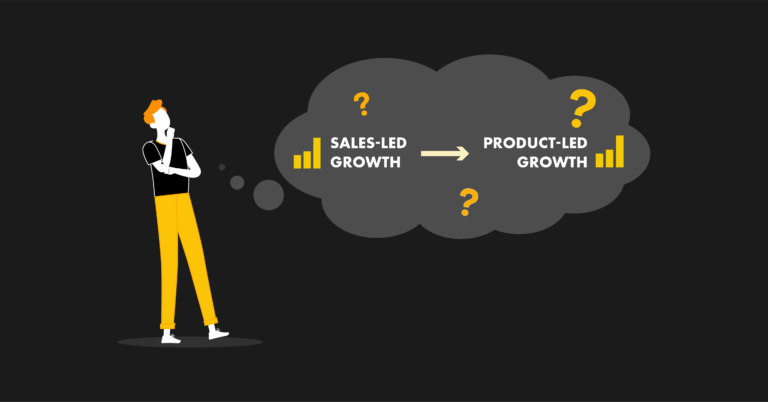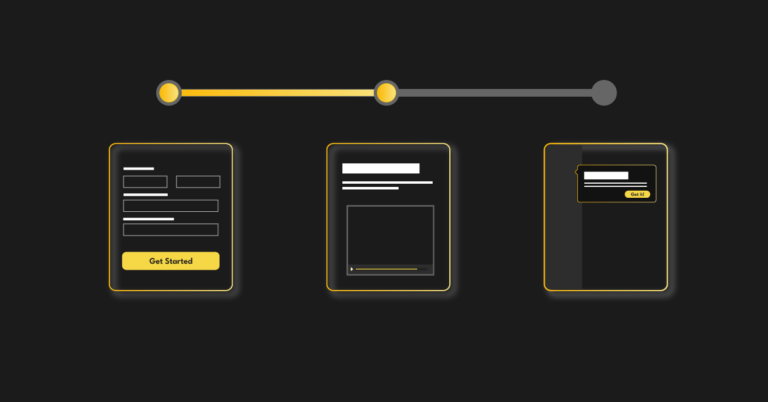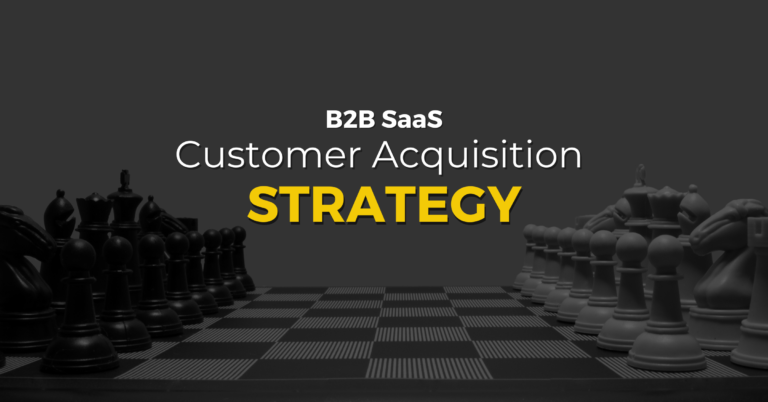In the world of SaaS, customer engagement is a measure of both how much time users are spending inside of your product and how much value they’re getting out of it.
You've probably heard of the most popular ways to engage your customers – live chat, pop-ups, and email marketing campaigns to prompt people to interact with a product.
However, just because someone opens your product and clicks around a few times doesn’t mean they’re getting value out of it. Real, long-term customer engagement can only be improved by understanding what creates value for your customers and driving them to find it.
That’s why we’ll start this guide to customer engagement by discussing the importance of defining customer engagement correctly for your business. This foundation will ensure you’re looking at engagement as a function of your product’s value and not getting distracted by vanity metrics.
Here’s everything we’ll cover below:
- The Importance of Defining Customer Activation and Engagement Correctly
- Top Customer Engagement Mistakes Made by SaaS Companies
- Key Customer Engagement Metrics for SaaS Products
- 3 Tools for Measuring and Improving Customer Engagement
ProductLed Academy is our 12-month coaching program where you'll work directly with Wes Bush to master each of the nine components of building a product-led business – including engagement. You can learn more here.
The Importance of Defining Customer Activation and Engagement Correctly
Again, engagement is the second-order effect of your product’s usefulness to customers.
That’s why before we can define engagement, we must first consider customer activation — the process of getting new customers to the moment when they realize your product’s value (called the “Aha” moment or “activation milestone”).
Reaching that milestone makes customers feel great about their decision to use your product, which prompts them to remain customers for the long run.
Here are two popular examples of activation milestones:
- Facebook’s 7 friends in 10 days. In this 2013 interview, Chamath Palihapitiya (Facebook’s former Head of Growth) said that the company’s primary onboarding goal for a long time was to get new users to add 7 friends in 10 days. Per the interview, this milestone was successful in large part because it was expressed in terms of product value — adding friends and interacting with them is one of Facebook’s key functionalities.
- Slack’s 2,000 messages. This is another example of an effective activation milestone expressed through product value (messaging is Slack’s core feature). In an interview, Slack’s CEO said that 93% of customers who reach 2,000 messages remain customers in the long run. As a result, 2,000 messages became the “magic number” that Slack’s team tried to get new customers to reach.
The key point here is that you need to uncover how people receive value from your product and find ways to guide them there. Only then can you move on to analyzing and generating engagement.
In this context, engagement refers to customers developing a habit of using your product (thanks to the benefits they receive from it).
For example, at Softr (where I’m Head of Growth), we offer a product that lets customers build no-code apps. The “Aha” moment for our customers is when they build a no-code app and their users start interacting with it. Broadly speaking, engaged customers for us are those who continue to improve their app or build new ones (i.e., habitual usage).
As you can probably guess, the process of defining engagement is highly specific for each product.
For Airtable — a tool that stores data and automates workflows — engaged users might be the ones that create a new database every month. Loom — a tool for recording and sharing videos — might consider users engaged when they create more than two videos every week.
Put simply, there’s no magic formula that determines what an “engaged customer” is for every product. It’s up to you to determine that.
A common place to start this process (after you’ve defined your “Aha” moment) is to list various engagement actions that customers can take while navigating your product. These are actions like:
- Account logins
- Feature clicks
- Time spent in the product
- Other product-specific interactions (like shares, dashboard creations, and so on)
Then, you can track these events with a user behavior tool like Heap (which we’ll discuss later). With this as a benchmark, you can compare how product changes or marketing prompts affect the occurrences of these events and can quantify the impact of your engagement efforts.
Here are two more advanced ways you can build upon this foundation:
- Weigh each engagement event based on its importance to the overall product engagement. This will help you understand and improve activity churn, as explained in Chapter 15 of the Product-Led Growth Book.
- Segment your customers based on their use case and engagement levels. Most SaaS products have various customer segments. Some of those segments are a better fit for the product and ultimately contribute more to the company’s bottom line. For example, our ideal customers for Softr want to build dynamic apps and websites, not static ones. We don’t mind the customer base that builds static sites but we don’t measure or optimize engagement for it. To maximize the effects of your engagement optimizations, it’s essential to uncover who those ideal customers are for your business and study their characteristics and behaviors.
Top Customer Engagement Mistakes Made by SaaS Companies
As you can see, merely defining engagement can be tricky, let alone measuring and trying to improve it. Along the way, SaaS teams often make some crucial mistakes, so in the next sections, we'll discuss how you can avoid those.
Trying Random Engagement Tactics with a “Spray and Pray” Approach
There’s no shortage of advice on improving customer engagement, like “Add live chat,” “Use pricing incentives,” and so on. Implementing some of these may even increase engagement for a time.
However, in the long run, you won’t get sustainable user engagement by just trying the next hot tactic. Just like defining engagement correctly, the process of improving it is highly individual.
That’s why you need a framework that evolves with your product and your customers’ needs, instead of a set of random tactics. Again, the foundation for your engagement efforts should be based on the value your customers receive and how you can nudge them toward that — be it through the product itself or through strategic interactions.
Looking for Engagement Problems in the Wrong Place
In a product-led company, the typical customer journey follows four stages: Acquisition → Engagement → Monetization → Expansion.
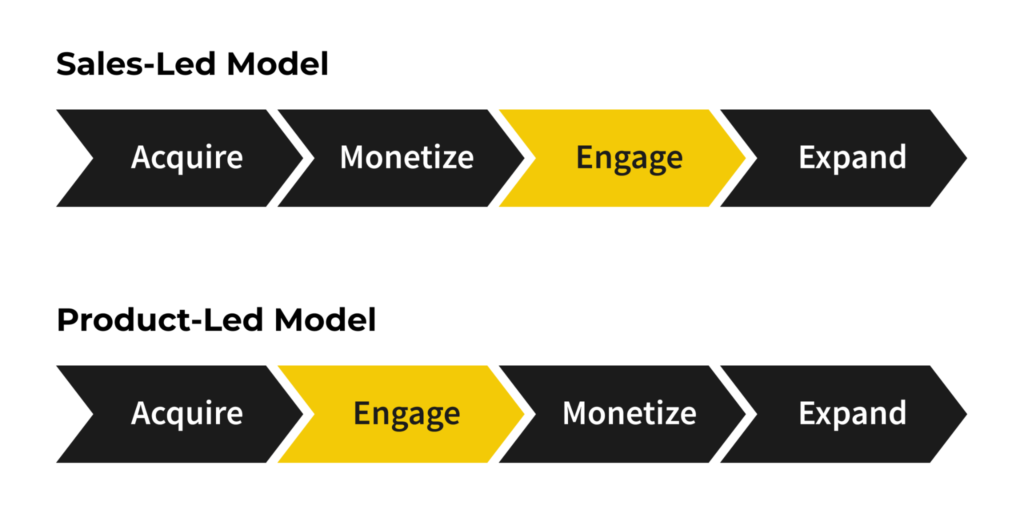
Naturally, most teams look for engagement problems in the middle stage. But in many cases, it's better to look at the acquisition stage as a possible source of engagement problems, as counter-intuitive as that may be.
Here’s why:
If you acquire the wrong type of customers, they likely won’t be too eager to use your product.
First, this leads to low activation rates, since any minor setback will cause them to drop off. Second, even the ones who reach the “Aha” moment may be reluctant to come back because the problems your product solves may not be very important or relevant to them.
In short, consider if you’re attracting the right customers for your product before spending time and effort on optimizing engagement for those customers.
Believing New Product Features Will Magically Improve Engagement
Product teams are usually drawn to the idea of building new features, as opposed to refining what they currently have. After all, new ideas are exciting and easier to sell (both to internal teams and potential customers) than gradual improvements to the current state of things.
However, this approach can be disastrous for your engagement efforts.
First, most new features take months to develop, during which time your engagement problems remain unsolved.
Second, the first version of new features is usually far from perfect, so you’ll need even more time to refine them to a point where they bring value to your existing customers.
The solution here is simple — allocate the appropriate time, effort, and money into refining your current product, alongside building new features.
Instead of putting 100% of your resources into building new things, dedicate, say, 20% of them to improving what you currently have. With this approach, you can continuously improve engagement, instead of hoping that a new feature that goes live six months from now will somehow fix it.
Looking at Engagement as a Marketing Problem
As we said at the start, many companies try to turn engagement into a game of messaging and incentives (e.g., if you send emails at the right time, customers will remember the product and somehow develop habitual usage).
While such tactics have their place, they can’t make up for a lackluster user experience. Again, product value is the main driver of engagement. Your product needs to help customers solve a problem or achieve a goal before you can consider how to improve engagement.
In that sense, customer engagement is a complex, cross-departmental challenge. Your job is to put product value in the center, with marketing and customer support playing a secondary role in guiding people to that value.
Key Customer Engagement Metrics for SaaS Products
While most SaaS companies use many general indicators for engagement, it’s a good idea to have an engagement metric(s) that’s unique to your product.
For example, a video game like Call of Duty might measure engagement by the number of completed levels or multiplayer matches played per week. A social media app like Pinterest or Instagram might look at shares or photo upload frequency. A design app like Figma might track the number of newly created design files each week.
Again, there’s no one-size-fits-all metric.
It’s up to you to find the right north star engagement metric for your business.
At a high level, this metric should be tied to the user performing some activity, which signals they’re getting value from your product.
Now, outside of this highly-specific metric, there are some general indicators that can also be useful for evaluating your engagement efforts:
- Retention: The percentage of users who continue paying for or using your product over a given timeframe. The more engaged your customers are, the higher your retention rate should be.
- Churn: The percentage of customers that stop using or paying for your product over a given timeframe. Here we have the opposite idea — the less engaged customers are, the more likely they are to stop using your product.
- Daily, Weekly, and Monthly Active Users (DAU, WAU, MAU): These metrics show how many active users you have within a specified timeframe. To calculate them, you first need to define what an “active user” is. Check out our article on how to grow active users for more details on this topic.
- Net Promoter Score (NPS): A measure of your customer’s experience with your product as a whole or with a certain feature. Running regular NPS surveys lets you keep a pulse on how customers feel or what they need from your product, which can help you find opportunities for improving engagement. For more details, check out Hotjar’s guide to NPS.
- Product Engagement Score (PES): A metric that provides an overview of how users interact with your product. It’s composed of three elements — Adoption (the average number of core events performed by core accounts), Stickiness (the ratio of DAU to MAU or WAU), and Growth (the sum of new and recovered accounts divided by lost accounts). We have an article on PES that can help you understand and measure this metric.
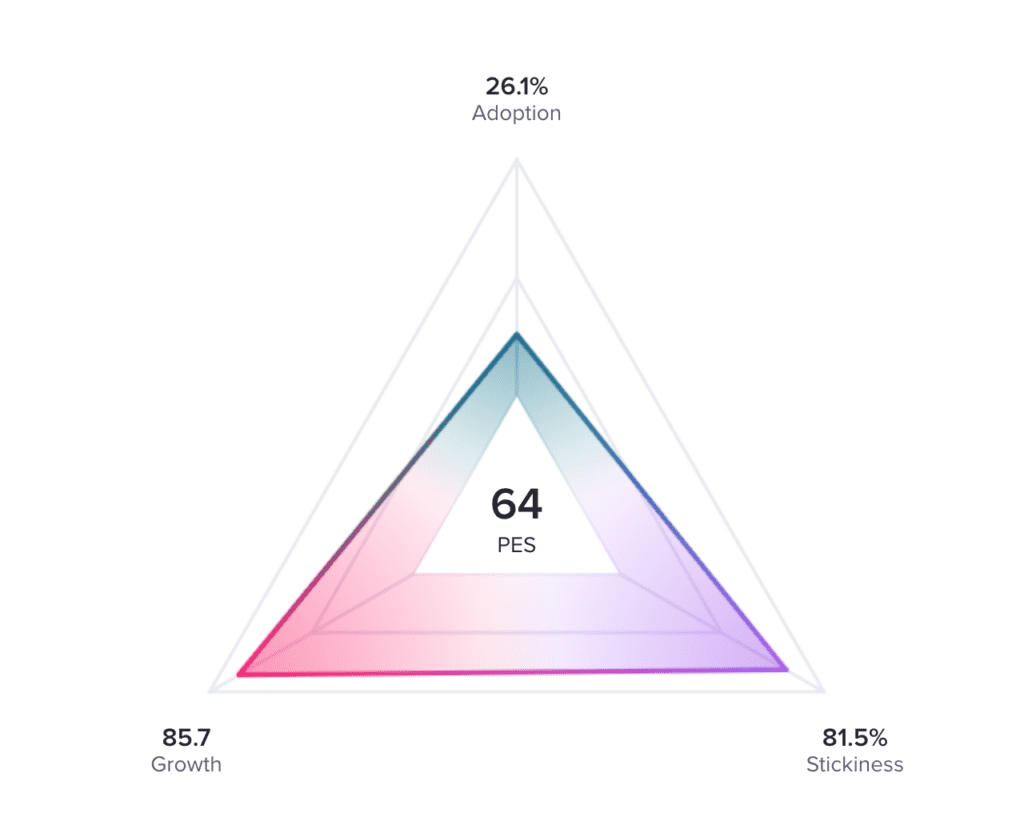
Lastly, note that it’s usually a good idea to look at engagement metrics for each customer segment separately.
As I said earlier, the relevant customers for Softr are people who want to build dynamic websites or apps. Analyzing our engagement metrics for all user segments together can easily lead us to a false conclusion.
For example, engagement might be great for our ideal customers and bad for the other segments. Without analyzing the metrics per segment, we may decide to radically change our engagement strategy, even though our ideal customers are clearly forming habitual product usage.
3 Tools for Measuring and Improving Customer Engagement
As you can see, boosting customer engagement is a complex task that requires a firm understanding of your customers’ behaviors, needs, and pain points. That’s why the tools we selected for this section can help you:
- Collect data on how customers interact with your product.
- Gather feedback from them on how they feel or what they want.
- Add in-product nudges and guides to help them navigate your product.
Heap: Capture Every User Interaction in Your Product
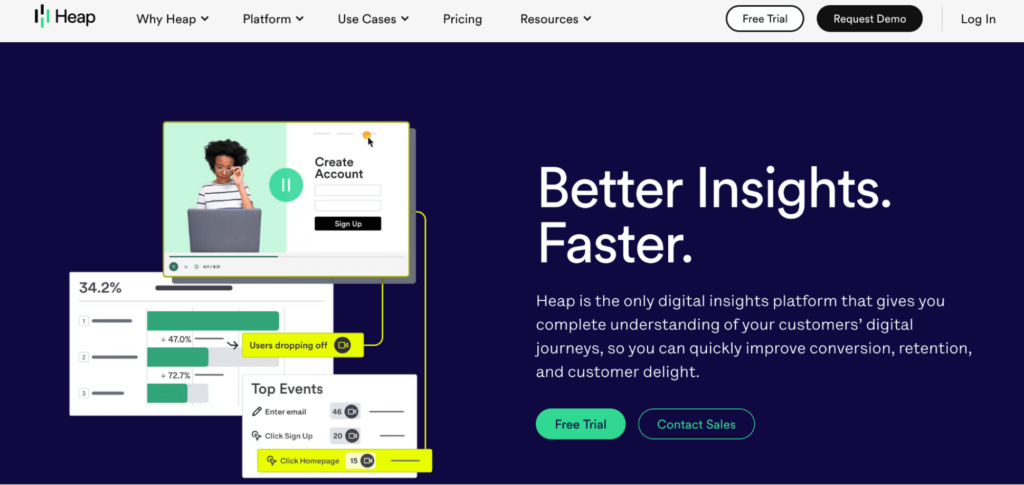
Heap is a digital insights platform that lets you capture every customer interaction in your product with one code snippet. It comes with several features that can help you analyze engagement, such as:
- Session replays, which let you watch how users interact with your product. This is crucial for empathizing with the user’s experience and uncovering their pain points.
- Events, which help you to track individual user actions. As I said, one of the key steps in defining engagement is listing important user activities — like account logins, feature clicks, dashboard creations, and so on — and tracking their occurrence over time.
- Segments, which allow you to analyze how different groups of customers interact with your product. Again, this is crucial for measuring and improving the engagement of your most valuable customers.
Survicate: Collect Customer Feedback
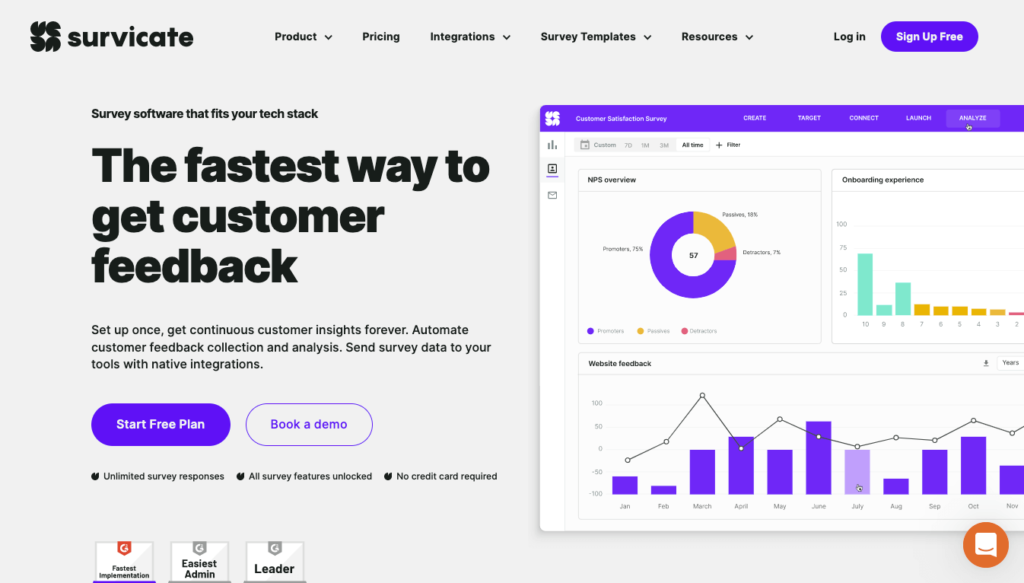
Survicate is a survey tool that lets you run different kinds of surveys and centralize feedback from multiple sources. In many cases, this direct feedback is the easiest way to find low-hanging fruit for boosting product engagement.
Here are two ways you can include Survicate in your engagement strategy:
- You can create NPS surveys (which I mentioned earlier) and embed them into emails that customers receive after using your product.
- You can create contextual product surveys and have them triggered based on customers’ characteristics (e.g., device, location, or logged-in status), as well as based on the action they take. For example, you can trigger an NPS survey a few minutes after customers from a certain segment start using a new feature to see if they find it useful.
Appcues: Provide Contextual Nudges and Guide Customers Through Features
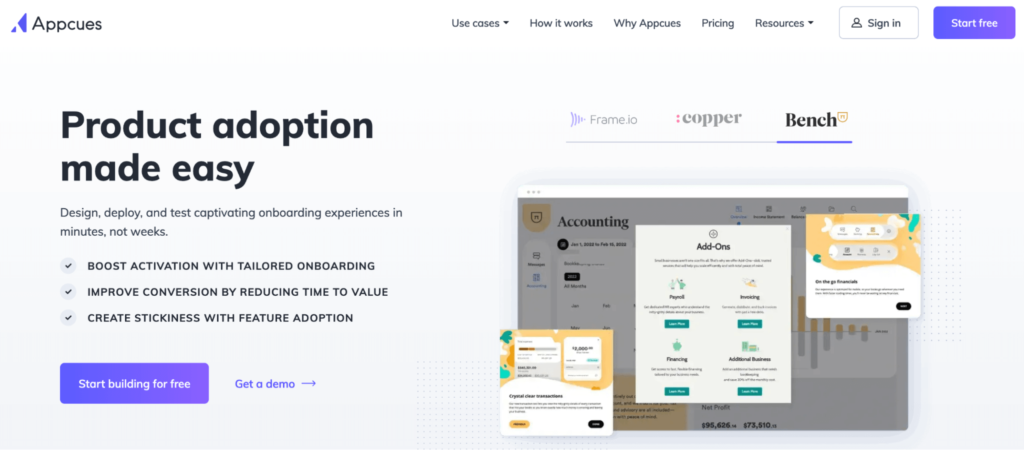
Appcues is a tool that helps you improve your product’s experience and engagement. It’s a great addition to the previous tools because you can use the insights gathered from them to generate engagement ideas and then implement those ideas with Appcues.
Here are two examples:
- Say you use Survicate to gather feedback from customers immediately after the onboarding process is complete and find some problems that create friction in the process. With Appcues, you can create onboarding tours and checklists to guide users to the “Aha” moment in a way that avoids these issues.
- Say you use Heap to analyze customer behavior and find that some features have a low adoption rate. Appcues allows you to create in-app prompts and notifications that nudge customers to engage with certain features, as well as build tutorials to help people navigate them. After implementing these changes, you can go back to Heap and analyze if they led to an increase in the adoption rate of those features.
Build the Right Customer Engagement Strategy for Your SaaS Product
As you can see, improving customer engagement for your SaaS product can be a really time-consuming and difficult process. In ProductLed Academy, we cover engagement as part of the ProductLed Method, so you can build a self-serve model that converts.
ProductLed Academy is a 12-month coaching program where you'll work directly with Wes Bush to master each of the nine components of a successful product-led business (we spend around six weeks on each of these):
- Vision: What is your company really good at?
- User: Who do you serve best?
- Model: How do you create a ton of value for your users to win?
- Offer: Have you crafted an irresistible free offer for your ideal users?
- Experience: Have you created an effortless path to value for your users?
- Pricing: Is it easy for users to upgrade without talking to anyone?
- Data: Do you know where users are getting stuck in your product?
- Process: Do you have a growth process that enables your team to build out experiments, prioritize the high-impact ones, and launch the ones that are easiest?
- Team: Is your team full of A players capable of taking you to the next level?
While you can have one or more of these dialed in perfectly, if you’re missing one of these key players, you’re going to have a hard time with growth.
Apart from focusing on those key areas of your strategy, ProductLed Academy comes with:
- Weekly 60-minute group coaching call with Wes Bush, where you'll go through each of the components of the ProductLed Method (including pricing) to master a self-serve model.
- Weekly non-negotiable tasks to keep you accountable.
- Access to an exclusive ProductLed Founder Community so you can meet other ambitious founders and receive support 24/7.
- Access to the ProductLed Vault, where you'll gain access to all of our programs (including ProductLed Acquisition and Accelerator), templates, and frameworks.
If you're ready to break through to the next level and master your pricing strategy, be sure to check out ProductLed Academy.

